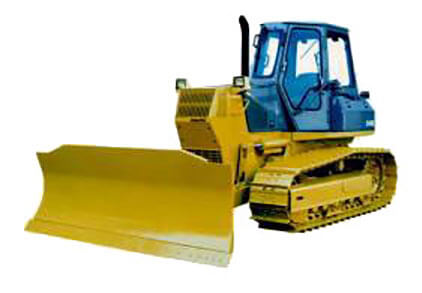1990
While equipment built to accommodate urban environments, by generating less noise, vibrations and emission, became more common, super sized equipment that could withstand harsh working conditions in places like giant mines were also developed.

This model excels at work that is essential to a mid size bulldozer such as leveling and preparing the soil. The super angle structure of the blade keeps the width of the body at 2.5m during transportation.
The full mono lever for driving and working gave it the operability of a Hydraulic excavator. At the beginning, production only took place at a factory in Brazil.
Weight: 10540kg
Bulldozer
Since its first emergence in 1951, it took only 50 years for the hydraulic shovel to establish its primary position on construction sites worldwide. Its size ranges from mini to super size depending on the scale of construction, and during the half century, it kept evolving by achieving a minimum rear-swing radius and adapting styles that would work with characteristics of each site. Mirroring the movement of a human hand, a hydraulic shovel will continue to evolve during the 21st century.